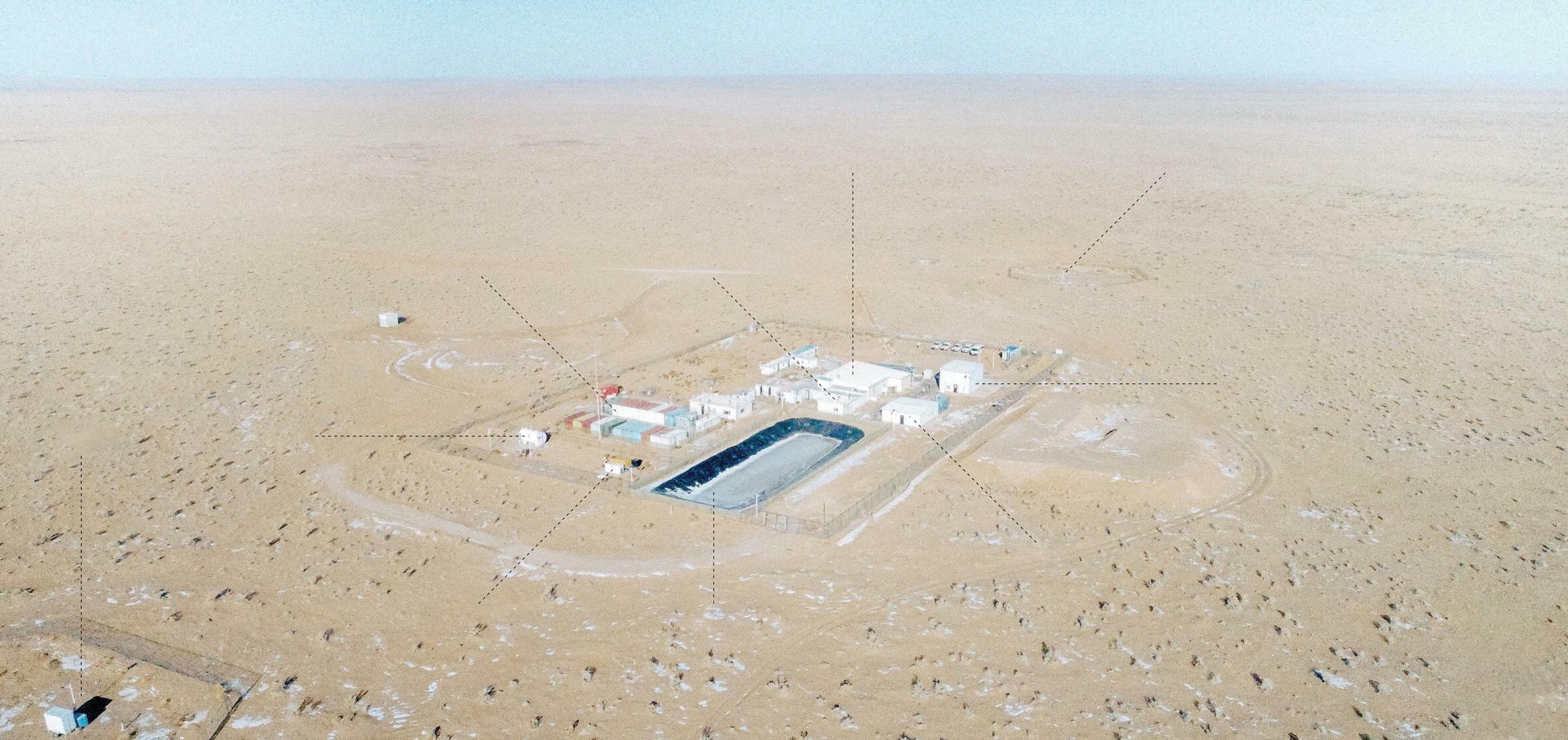
AERIAL VIEW OF THE ZUUVCH-OVOO URANIUM MINE PILOT FACILITY IN MONGOLIA'S GOBI DESERT
THE GOBI DESERT, ONCE REVERED BY MONGOlian poet Dulduityn Danzanravjaa as hiding a cosmic portal to the heavenly kingdom of Shambala, was transformed in the 20th century from spiritual energy center to fossil-fuel hub. Wild rabbits and donkeys share the windswept dunes with rusting oil pumps, while an endless caravan of soot-stained trucks haul coal south to the border with China. Now, the Gobi is on the cusp of another reincarnation, one that its supporters believe could help future-proof the global energy landscape.
In October, the French state-owned nuclear firm Orano signed a $1.7 billion deal to extract and process uranium from the Zuuvch-Ovoo mine, not two hours by car from the landmarked site of Danzanravjaa's cosmic portal.
Mongolia's first uranium mine is expected to produce about 2,750 tons annually for three decades, some 4% of global production; it's currently one of the top 10 unexploited deposits worldwide.
"This deposit is far from the only one," says Olivier Thoumyre, a senior vice president for Orano. "There is huge potential in Mongolia... to enter the uranium market at the right time, because we know needs are going to increase." Mongolia boasts the world's second-largest uranium reserves, which promise to catapult this landlocked nation of 3.5 million into position as a key player in the global renewable-energy transition.
This story is from the {{IssueName}} edition of {{MagazineName}}.
Start your 7-day Magzter GOLD free trial to access thousands of curated premium stories, and 9,000+ magazines and newspapers.
Already a subscriber ? Sign In
This story is from the {{IssueName}} edition of {{MagazineName}}.
Start your 7-day Magzter GOLD free trial to access thousands of curated premium stories, and 9,000+ magazines and newspapers.
Already a subscriber? Sign In

Q & A: Borge Brende
The World Economic Forum president talks with TIME editor Sam Jacobs

Q & A - Rene Haas
Arm's CEO on how his hardware is supporting the Fourth Industrial Revolution

The conflicts looming over 2025
WHEN DONALD TRUMP TOOK THE OATH OF OFFICE AS President in January 2017, his first foreign policy priority was to get tough on China. The Trump 2.0 Administration will continue that work. But when he strides back into the Oval Office in January 2025, Trump will also become responsible for U.S. management of two dangerous wars, the kinds of hot foreign policy crises he was fortunate to avoid during his first term.

Rev Lebaredian
Nvidia's vice president of Omniverse and simulation technology on training AI-powered robots

5 predictions for AI in 2025
New uses and policy questions come into focus

Roy Wood Jr. The comedian on his new stand-up special, the importance of working in food service, and learning from Keanu Reeves
8 QUESTIONS WITH Roy Wood Jr.

A call for global cooperation in the Intelligent Age
Cultivate wisdom along with innovation

The D.C. Brief
IN THE END, THE THREAT OF A FARright revolt proved more menacing than most imagined, as Republican Mike Johnson initially came up short on Jan. 3 during the first balloting to keep him as Speaker.

The digital labor revolution
OVER THE PAST TWO YEARS, WE'VE WITNESSED advances in AI that have captured our imaginations with unprecedented capabilities in language and ingenuity. And yet, as impressive as these developments have been, they're only the opening act. We are now entering a new era of autonomous AI agents that take action on their own and augment the work of humans. This isn't just an evolution of technology. It's a revolution that will fundamentally redefine how humans work, live, and connect with one another from this point forward.

Tech we can trust
Serving humanity's best interests must be at the center of progress